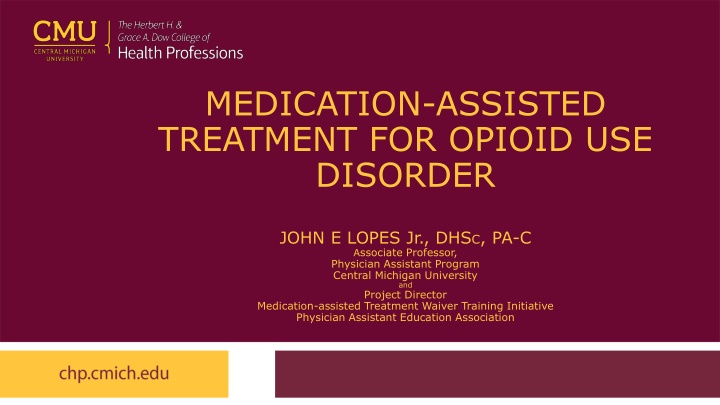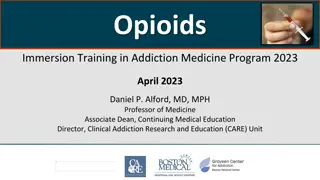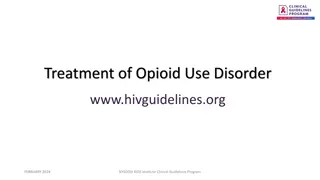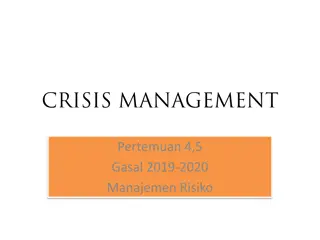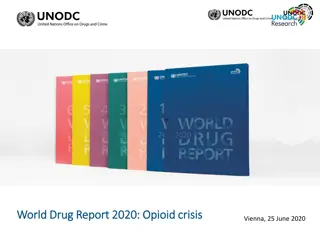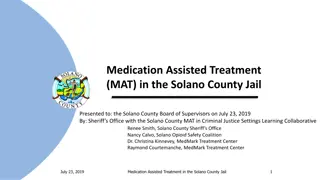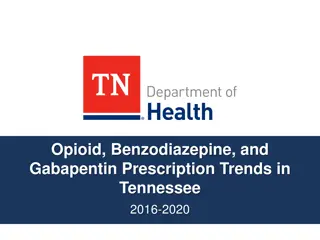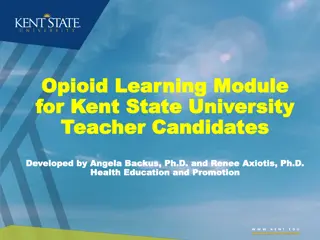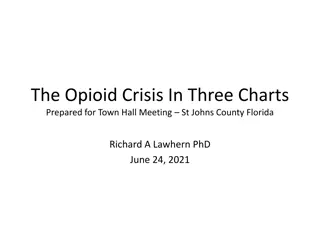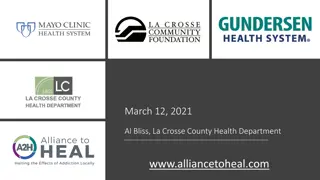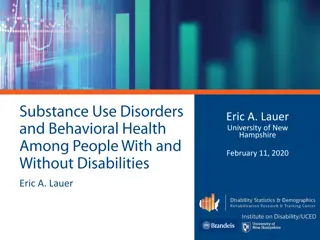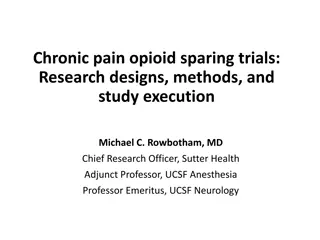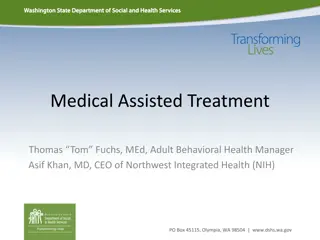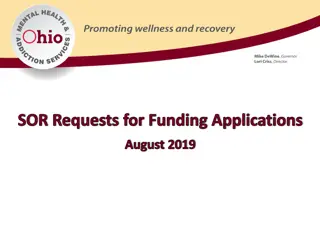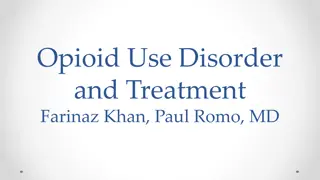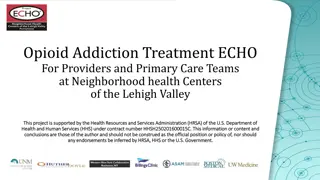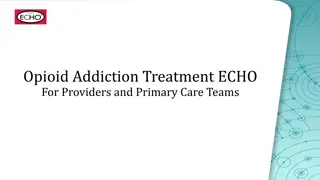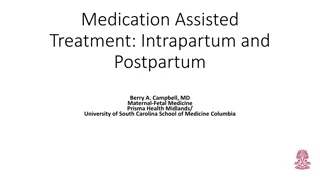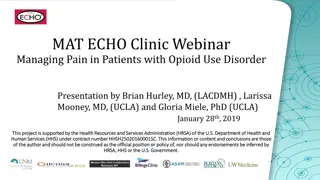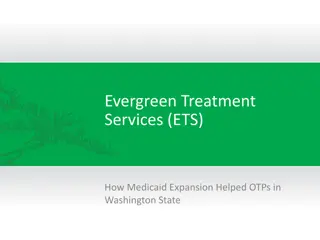Medication-Assisted Treatment for Opioid Use Disorder Crisis
In this informative content, John E. Lopes Jr., DHSC, PA-C discusses the opioid use disorder crisis, addiction as a chronic disease, evidence for medication-assisted treatment (MAT), and FDA-approved medications for MAT. Statistics on accidental deaths and drug overdoses in the US are highlighted, emphasizing the need for effective interventions. Screening, brief intervention, and referral to treatment (SBIRT) services are also explored as valuable tools in addressing substance use risks and promoting overall health.
Download Presentation

Please find below an Image/Link to download the presentation.
The content on the website is provided AS IS for your information and personal use only. It may not be sold, licensed, or shared on other websites without obtaining consent from the author.If you encounter any issues during the download, it is possible that the publisher has removed the file from their server.
You are allowed to download the files provided on this website for personal or commercial use, subject to the condition that they are used lawfully. All files are the property of their respective owners.
The content on the website is provided AS IS for your information and personal use only. It may not be sold, licensed, or shared on other websites without obtaining consent from the author.
E N D
Presentation Transcript
MEDICATION-ASSISTED TREATMENT FOR OPIOID USE DISORDER JOHN E LOPES Jr., DHSC, PA-C Associate Professor, Physician Assistant Program Central Michigan University and Project Director Medication-assisted Treatment Waiver Training Initiative Physician Assistant Education Association
Objectives 2 Describe the extent of the opioid use disorder crisis Explain the nature of addiction as a chronic disease Describe the evidence for medication-assisted treatment (MAT) Explain the use of the three FDA approved medications for MAT
Accidental Deaths in the US Age Range: 0 85 3 Data source: NCHS Vital Statistics System for numbers of deaths. Bureau of Census for population estimates.
In 2016, the age-adjusted rate of drug overdose in the US was more than three times the rate in 1999 4
Among persons aged 15 and over, adults aged 25-34, 35-44, and 45-54 had the highest rates of drug overdose deaths in 2016 5
9 Diagnosis of Opiate Use Disorder
Screening, Brief Intervention, Referral to Treatment (SBIRT) 10 A set of services designed to identify an individual s level of risk from alcohol or other substance use and provide an appropriate follow-up service Demonstrated benefit for hazardous alcohol users; less robust evidence of benefit for illicit drug users .
SBIRT 11 Three main components Screening Assess the risk for or presence of a substance use or mental health disorder Brief Intervention Raising awareness of behavioral change that supports overall health Referral to treatment A clear pathway for follow-up with individuals identified as having a substance use or mental health disorder
12 Two-item Drug Use Disorder Screener for Primary Care Clinics Serving US Veterans Single-Item Drug Screener How many times in the past year have you used an illegal drug or a prescription medication for nonmedical reasons? (A positive screen is 1 or more days.) Question 1: How many days in the past 12 months have you used drugs other than alcohol? (A positive screen is 7 or more days. If < 7, proceed with Question 2.) Smith, P. C., Schmidt, S. M., Allensworth-Davies, D., & Saitz, R. (2010). A single-question screening test for drug use in primary care. Archives of Internal Medicine, 170(13), 1155 1160. Question 2: How many days in the past 12 months have you used drugs more than you meant to? (A positive screen is 2 or more days.) Tiet, Q. Q., Leyva, Y. E., Moos, R. H., Frayne, S. M., Osterberg, L., & Smith, B. (2015). Screen of drug use: Diagnostic accuracy of a new brief tool for primary care. JAMA Internal Medicine, 175(8), 1371 1377.
USPSTF Evaluated Screening Instruments for Illicit Drug Use 13 ASSIST (WHO) Alcohol, Smoking, and Substance Involvement Screening Test CAGE-AID Cut down, Annoyed, Guilty, Eye-opener Adapted to Include Drugs CRAFFT Car, Relax, Alone, Forget, Friends, Trouble DAST Drug Abuse Screening Test DUDIT Drug Use Disorders Identification Test RAFFT Relax, Alone, Forget, Friends, Trouble RAGS Reduce, Annoyed, Guilty, Start RPDS Rapid Drug Problems Screen SSI-SA Simple Screening Instrument for Substance Abuse Lanier D, Ko S. Screening in Primary Care Settings for Illicit Drug Use: Assessment of Screening Instruments A Supplemental Evidence Update for the U.S. Preventive Services Task Force. Evidence Synthesis No. 58, Part 2. AHRQ Publication No. 08-05108-EF-2. Rockville, Maryland: Agency for Healthcare Research and Quality. January 2008.
DSM-5 Criteria for Opioid Use Disorder Long Time Craving Control TRASHeD Withdrawn* Longer use or larger amounts used than intended Time spent obtaining opioids, using, or recovering from use Craving opioids Failed attempts at control or cutting back opioid use Opioid Tolerance Role failure due to opioid use Activities reduced because of recurrent opioid use Social problems resulting from recurrent opioid use Health problems resulting from recurrent opioid use Dangerous opioid use: use despite risk of physical hazard Opioid withdrawal syndrome 14 In the above mnemonic, the satisfaction of two or more criteria in a 12-month period defines opioid use disorder. Criteria are listed in order of severity, progressing from milder criteria to those criteria that most impair function or cause distress. Severity scaling is determined by the number of criteria that are met and may be remembered by 5 or 4 is a moderate score (2-3 = mild; 6 = severe). *Conner HS. Harvard Review of Psychiatry (2015); 23(2)
15 Medication-assisted Treatment of Opioid Use Disorder
Methadone 16 Full opioid receptor agonist Dispensed only in accredited/licensed treatment programs Medical director must meet regulatory requirements Stabilization of patient in state of normal function by blockade treatment. From Arch Intern Med, 1966, 118: 304
Buprenorphine 17 Partial opioid receptor agonist/antagonist Available through treatment programs and in outpatient settings Requires special training to prescribe
Naltrexone 18 Full opioid receptor antagonist Available from treatment programs and outpatient offices No special training to prescribe or administer
Reimbursement 19 Treatment of OUD in the outpatient setting is just like treating any other chronic disorder Medicaid, Medicare, and commercial insurance companies should pay for any care considered reasonable and necessary https://elearning-asam.org/NavigatingPaymentPathways
Diagnoses Codes ICD-10 20 F11 Opioid related disorders F11.1 Opioid abuse F11.10 Opioid abuse uncomplicated F11.11 Opioid abuse in remission F11.12 Opioid abuse with intoxication F11.2 Opioid dependence F11.20 Opioid dependence uncomplicated F11.21 Opioid dependence in remission F11.23 Opioid dependence with withdrawal
DATA 2000 Waiver Training 21 MAT using buprenorphine is authorized under the Drug Addiction Treatment Act of 2000 Requires physicians without certain qualifications to take additional training and obtain a DEA certificate to prescribe buprenorphine for MAT The Comprehensive Addiction Recovery Act of 2016 provides a time-limited window for PAs and NPs to obtain a waiver to prescribe buprenorphine
Resources 22 DATA waiver training for physicians, PAs, NPs American Society of Addiction Medicine www.elearning-asam.org/buprenorphine-waiver-course Provider Clinical Support System www.pcssnow.org/education-training/mat-training/ American Academy of Addiction Psychiatry www.aaap.org/clinicians/education-training/mat-waiver-training/ American Psychiatry Association www.psychiatry.org/psychiatrists/education/signature-initiatives/buprenorphine- prescriber-training American Osteopathic Academy of Addiction Medicine www.aoaam.org/PCSSMAT
QUESTIONS 23
